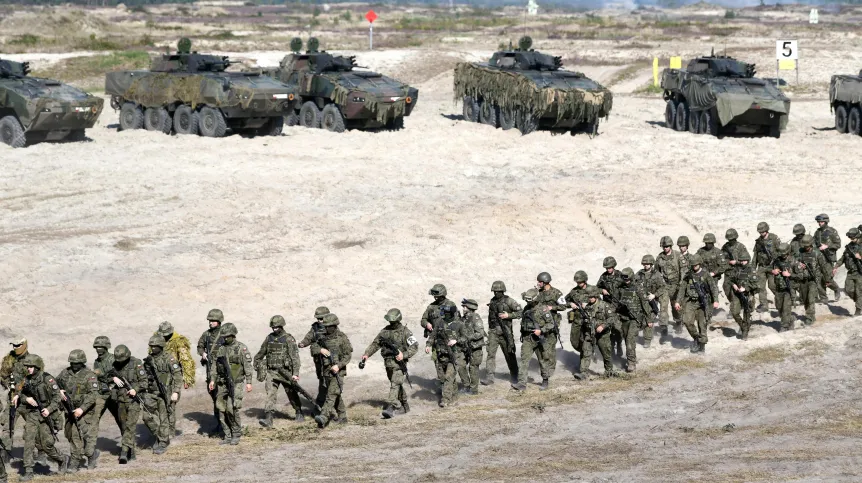
Image recognition experts from the Military University of Technology in Warsaw are working on the deployment of a constellation of three observation nanosatellites and a technology that will use drones and biosensors to monitor the health of soldiers in combat or people affected in mass events.
INDEPENDENT SPACE RECONNAISSANCE
The satellites that will be deployed in orbit will enable optoelectronic image reconnaissance. The PIAST project is being carried out at the Department of Image Reconnaissance. The Satellite Operations Centre is preparing to support the constellation of three nanosatellites, the first of them to be launched into orbit by the end of 2024.
Dr. Piotr Walczykowski, head of the Department of Image Reconnaissance at the Faculty of Civil Engineering and Geodesy said: “The satellites will be integrated in Poland, made with Polish technologies, and will be controlled from the territory of Poland. Algorithms for increasing imaging resolution through the numerical composition of images from cooperating satellites will be developed.”
Radar satellite simulator, or 'flatsat', will make it possible to plan a mission, simulate the adopted scenario, and verify the correctness of the manoeuvres planned by the operators. Although the simulator is an engineering model, it has physical components of the satellite platform being sent into orbit. These components include: an on-board computer, power system, radar payload, radar antenna, and part of the solar panel. The simulator includes not only the platform, but also the mission management system and software for mission planning and analysis.
Dr. Piotr Walczykowski said: “The Polish armed forces strive for autonomy and independence in access to imaging reconnaissance data. The location of the ground station on the university campus will be another step towards achieving that goal.”
He added that students will plan the observation mission and obtain real-time images using specialized software used by large satellite centres around the world.
MEDICAL DATA ON THE BATTLEFIELD AND DURING MASS EVENTS
Scientists working in the MILGEOMED project are developing complete technology for obtaining geo- and bio-data using unmanned aerial platforms and medical sensors. The goal is to reduce the mortality and disability of soldiers on the battlefield, and to facilitate assistance to people injured during mass events.
Dr. Walczykowski said: “The system will enable preliminary, remote, and rapid assessment of the event in terms of spatial geolocation, not only on the battlefield, but also in the case of a mass accident. It will be used by rescue units for medical assessment of the injured, their accurate location, and distribution of rescue teams in the area of the event."
The PIAST and MILGEOMED projects are implemented by consortia led by the Military University of Technology in Warsaw.
POLAND IS TRAINING IMAGE RECOGNITION EXPERTS
The Department of Image Reconnaissance is introducing satellite technologies into its educational program. According to Professor Michał Kędzierski, Dean of the Faculty of Civil Engineering and Geodesy, this way scientists provide the military with access to current reconnaissance information at different levels. At the same time, employees are trained for the space sector.
The research activity of the department focuses on issues related to obtaining and processing images. This is made possible by the Image Reconnaissance Laboratory subordinated to the Department. The lab is equipped with cameras for recording colour, multispectral and hyperspectral images, as well as unmanned wing and rotor aircraft platforms and complete systems. These systems are complemented by computer stations with expert software, allowing for advanced image processing.
In addition to planning satellite missions, the department develops unmanned and aerial photography missions. These missions support crisis management with rapid reconnaissance information, supported by systems such as FlyEye, Tiguar, and the photogrammetric camera FaceOne.
The Department of Image Reconnaissance at the Faculty of Civil Engineering and Geodesy of the Military University of Technology in Warsaw was established on June 1, 2021, based on the Department of Remote Sensing, Photogrammetry, and Image Reconnaissance. It continues the tradition of the Photogrammetry and Photointerpretation Department, established in 1969. The Department of Image Reconnaissance is responsible for the Satellite Operations Centre and the Image Reconnaissance Laboratory.
PAP - Science in Poland
tr. RL
kol/ agt/ kap/













